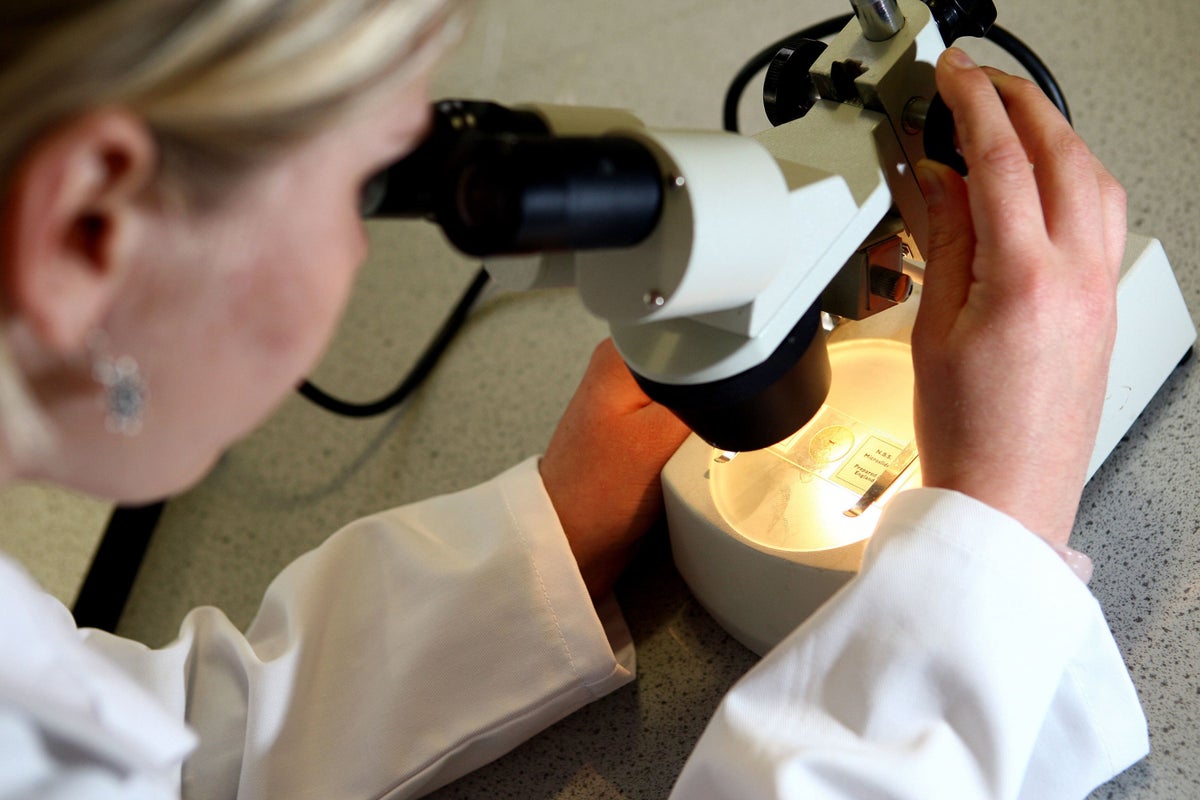
Scientists are one step closer to creating a new generation of light-activated cancer treatments.
The futuristic sounding care would work by switching on LED lights embedded close to a tumour, which would then activate a specific type of drug.
These treatments would be highly targeted and more effective than current state-of-the-art cancer immunotherapies, researchers suggest.
The University of East Anglia (UEA) scientists have engineered antibody fragments, which fight disease, that fuse with their target and are also light activated.
This suggests that in the future, immunotherapy treatments could be engineered to attack tumours more precisely than ever before.
Essentially, antibodies could be activated to attack tumour cells by shining lights that could be implanted at the site of a tumour inside the body.
This would allow cancer treatment to be more efficient and targeted.
We hope that our work will lead to the development of a new class of highly targeted light-responsive biotherapeutics— Dr Amit Sachdeva, UEA
Dr Amit Sachdeva, from UEA’s School of Chemistry, principal scientist for the study, said: “Current cancer treatments like chemotherapy kill cancer cells, but they can also damage healthy cells in your body such as blood and skin cells.
“This means that they can cause side effects including hair loss, feeling tired and sick, and they also put patients at increased risk of picking up infections.
“There has therefore been a very big drive to create new treatments that are more targeted and don’t have these unwanted side effects.”
Dr Sachdeva added: “A covalent bond is a bit like melting two pieces of plastic and fusing them together. It means that drug molecules could for example be permanently fixed to a tumour.
“We hope that our work will lead to the development of a new class of highly targeted light-responsive biotherapeutics.
“This would mean that antibodies could be activated at the site of a tumour and covalently stick to their target upon light activation.
“In other words, you could activate antibodies to attack tumour cells by shining light – either directly on to the skin, in the case of skin cancer, or using small LED lights that could be implanted at the site of a tumour inside the body.
“This would allow cancer treatment to be more efficient and targeted because it means that only molecules in the vicinity of the tumour would be activated, and it wouldn’t affect other cells.
“This would potentially reduce side effects for patients, and also improve antibody residence time in the body.”
Researchers say the therapy would work for cancers like skin cancer, or where there is a solid tumour – but not for blood cancers like leukaemia.
If the researchers are successful in the next stages of their work, they hope to see the next generation of light-activated immunotherapies being used to treat cancer patients within five to 10 years.
The research, funded by the Biotechnology and Biological Sciences Research Council and the Wellcome Trust, is reported in Nature Chemical Biology.







